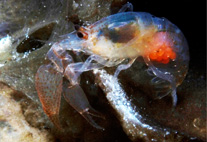Abstract
Biological collections are central databases for information concerning morphology and diversity in all living groups (Marinoni et al. 2005). According to Blaxter (2004), valuable information about taxonomic identification and phylogenetic inference can be provided by DNA sequences. Common methods for DNA extraction normally involve partial destruction of the specimen; this kind of extraction is not attractive for use in the case of historical specimens. The application of that idea in insect collections became possible once Gilbert et al. (2007) published a new protocol that allows the extraction of this useful DNA from dry-preserved collection specimens for genetic analyses. However, the authors used specimens from four different collections located only in temperate zones (California Academy of Sciences, Smithsonian Institution’s National Museum of Natural History, Carnegie Museum of Natural History, and the National Science Museum, Tokyo).

